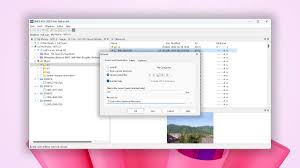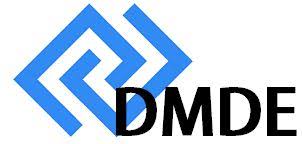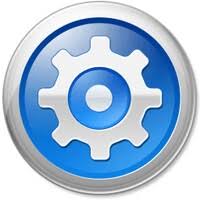Overview of DM Disk Editor and Data Recovery Free
DM Disk Editor and Data Recovery Free (DMDE) is a highly efficient software tool designed for data recovery, disk editing, and partition management. Known for its robust functionality and compatibility with various file systems, DMDE is a versatile solution for recovering lost or corrupted data from different types of storage media. Its Free edition offers powerful capabilities while maintaining accessibility for both novice users and professionals.
Features of DM Disk Editor and Data Recovery Free
Data Recovery
- File Recovery: Recovers deleted, lost, or corrupted files caused by formatting, accidental deletion, or file system issues.
- Directory Reconstruction: Rebuilds damaged directory structures to recover files even in complex scenarios.
- Raw Recovery: Uses file signature analysis to recover files when metadata is unavailable or severely corrupted.
- Supported File Systems: Includes FAT12/16/32, NTFS, exFAT, Ext2/3/4, HFS+/HFSX, APFS, ReFS, and btrfs.
Disk Editor
- Hex Editor: Provides a powerful hexadecimal disk editor for direct access to disk sectors.
- Detailed Analysis: Allows users to view and edit key disk structures such as:
- Master Boot Record (MBR)
- GUID Partition Table (GPT)
- Boot sectors
- File tables
- Cluster Map: Visualizes clusters and shows files occupying specific disk areas.
Partition Management
- Partition Recovery: Searches for and restores lost or accidentally deleted partitions by analyzing metadata from boot sectors and superblocks.
- Partition Editing: Allows users to modify partition tables safely and efficiently.
Disk Cloning and Imaging
- Disk Imaging: Creates sector-by-sector images of disks for backup or forensic analysis.
- Disk Cloning: Copies disks or partitions to another storage medium for recovery or migration.
- Error Handling: Effectively works with disks containing bad sectors or other read errors.
RAID Reconstruction
- RAID Constructor: Virtually reconstructs damaged or broken RAID arrays to enable data recovery.
- RAID Support: Compatible with various RAID configurations, including RAID-0, RAID-1, RAID-4, RAID-5, RAID-6, and custom setups.
Freeware Features
- File Recovery Limit: Recovers up to 4,000 files per directory per session with unlimited sessions.
- RAID and Partition Tools: Offers access to the RAID constructor, partition manager, and disk editor at no cost.
- Disk Imaging and Cloning: Available in the Free edition for creating and restoring backups.
Multi-Platform Support
- Operating Systems: Works seamlessly on Windows, macOS, Linux, and DOS environments.
- Storage Media: Compatible with HDDs, SSDs, USB drives, memory cards, and more.
Additional Tools
- Boot Sector Viewer: Allows users to view and repair boot sectors.
- File Preview: Provides a preview of recoverable files before restoration.
- User-Friendly Interface: Features a clear and structured interface suitable for users of varying technical expertise.
Technical Details

Software Version:
DMDE Free 4.0.6.806
(Latest version at the time of writing; subject to updates.)
Supported File Systems:
FAT12, FAT16, FAT32
NTFS
exFAT
Ext2/Ext3/Ext4
HFS+/HFSX
APFS
ReFS
btrfs
Supported Storage Media:
HDDs (Hard Disk Drives)
SSDs (Solid State Drives)
USB flash drives
Memory cards (SD, microSD, CF, etc.)
External storage devices (e.g., NAS devices in specific cases)
Disk Types:
MBR (Master Boot Record)
GPT (GUID Partition Table)
Dynamic disks
RAID arrays
Recovery Limits in Free Edition:
Up to 4,000 files per session from a single directory.
Unlimited sessions allowed for continued recovery tasks.
System Requirements
Operating Systems
DMDE is compatible with multiple platforms, ensuring flexibility:
- Windows: Windows 7, 8, 8.1, 10, 11 (32-bit and 64-bit)
- macOS: Compatible with macOS versions that support x86 architecture.
- Linux: Runs on Linux-based systems via native support or Wine compatibility layer.
- DOS: Available for advanced users and older hardware setups.
Hardware Requirements
DMDE is lightweight and efficient, with modest hardware needs:
- Processor: Pentium-class or higher (modern processors recommended for faster performance).
- RAM: 1 GB minimum (2 GB or more recommended for larger drives and faster recovery processes).
- Storage Space:
- Installation size: ~10 MB
- Additional space required for disk images, recovery files, and logs.
- Display: 1024×768 resolution or higher.
Peripheral Requirements
- Admin Privileges: Required for installation and accessing low-level disk structures.
- Input Devices: Standard keyboard and mouse support.
- Internet Connection:
- Optional for updates and access to online documentation.
- Not required for offline recovery tasks.
Key Technical Features
Portability:
Can run from a USB drive, making it ideal for on-the-go recovery tasks.
No installation required for the portable version.
Error Handling:
Includes advanced handling for bad sectors and damaged storage media.
File Signature Database:
Built-in support for identifying files based on unique signatures during raw recovery.
Recommended Use Cases
- Personal: Recover lost files from damaged USB drives, memory cards, or internal drives.
- Professional: Manage data recovery for clients, including complex RAID configurations.
- Forensic Analysis: Analyze and recover critical data for investigative purposes.


